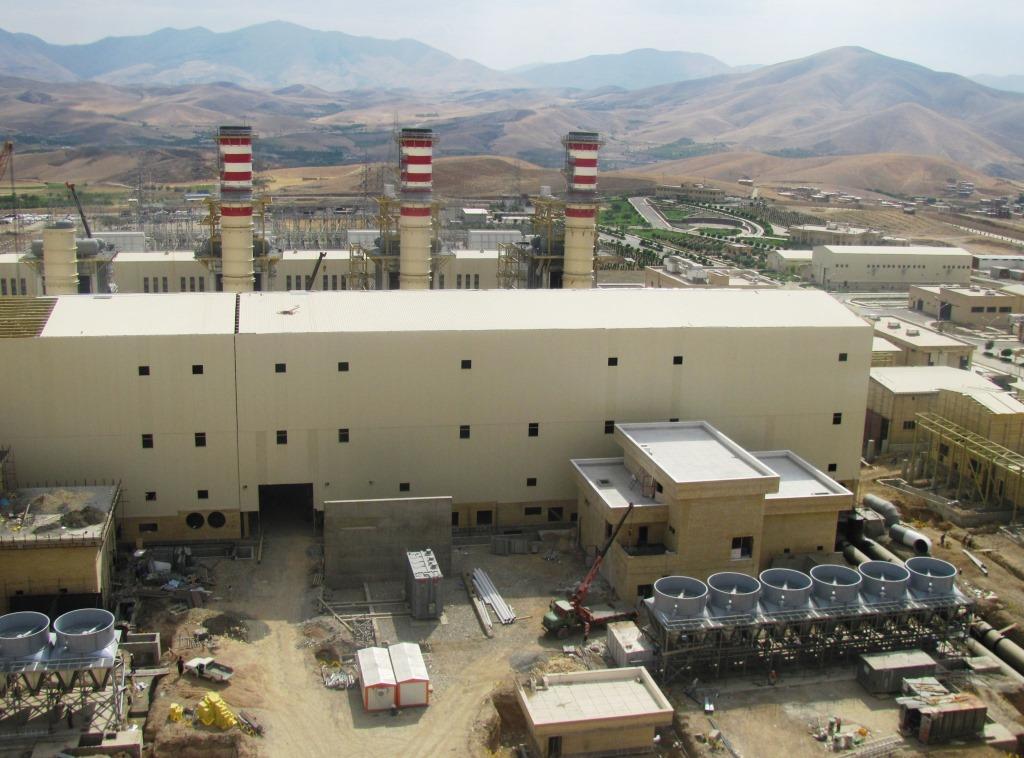Notwithstanding concerted efforts to build new thermal power plants across Iran, a lack of funding has slowed development plans to expand the much-needed power installations, Thermal Power Plants Holding Company's deputy for planning said.
"Despite TPPHC's attempts to replace gas-powered units by steam-fueled ones, budgetary problems have hindered progress," Hamidreza Azimi was also quoted as saying by IRNA on Saturday.
Pointing to ongoing ventures to boost electricity generation through combined-cycle power stations, Azimi said, "TPPHC has signed 43 contracts with the private sector to convert gas units to steam-powered ones, yet the allocated budget by the government is too small to help the plan get off the ground."
According to the official, six steam units had been planned to become operational in Parand Power Plant in southern Tehran as well as Jahrom Power Station in Shiraz Province by March 2016, yet it seems to be a tall order regarding the available financial resources.
"TPPHC asked for 5.7 trillion rials (about $157 million), but the government provided only 80 billion rials ($2 million)," Azimi said, noting that this explains why only a single steam unit has come on stream in Parand.
Lamenting the cap in the fiscal 2017-18 budget, he said financial requirements for power projects in Asaluyeh, Kashan, Ardabil and Khorasan Razavi Province amount to $275 million while the government's pledge does not exceed $1.5 million.
"The operation to construct new thermal power plants will come to a standstill sooner or later, if the necessary funding is not attracted," he said.
A combined-cycle power plant uses both gas and steam turbines to produce up to 50% more electricity from the same fuel than a traditional simple-cycle plant.
Highlighting the advantages of launching combined-cycle power plants, Azimi added that the completion of each plant will help the country save 11 billion cubic meters of gas feedstock per year that is equaled by $2 billion in revenues per annum.
Moreover, there will be a remarkable decrease in the country's greenhouse gas emissions.
Iran accounts for 1.3% of global emissions, which is high compared to other countries because despite Tehran’s increasing emissions over the past few years, the economy has not developed as expected.
Ventures Underway
According to Azimi, despite all financial limitations, ventures to build new thermal power plants in different provinces with a combined output capacity of 2,000 megawatts are underway as part of efforts to minimize outages.
"TPPHC is trying to add 2,000 MW of new capacity to the national grid with the help of state funds and the private sector," he added, noting that the company has commenced the construction of a 540-megawatt combined cycle power plant in Zahedan, the provincial capital of Sistan-Baluchestan Province at an estimated cost of €300 million ($327 million).
Reportedly, the gas unit of the power plant will come on stream by September 2018 and its steam unit is scheduled to become operational in November 2019. The official also added that Azimi said several gas-fired power plants in Bandar Abbas, Andimeshk, Omidieh, Hamedan, Buin Zahra, Salafchegan and Khorramabad are gradually being replaced with combined-cycle plants as part of the drive to help reduce the energy sector's role in air pollution.
Iran's installed power generation capacity is around 77,000 megawatts, over 62,000 MW of which come from thermal power plants that burn fossil fuels along with hydropower plants (12,000 MW), Bushehr nuclear plant (1,000 MW) in southern Iran, distributed generation stations (1,500 MW) and renewables (with under 500 MW).


